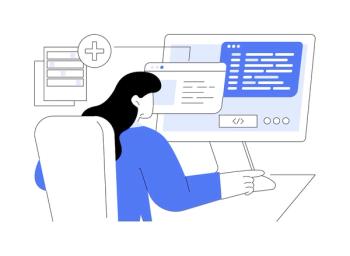
Is a scribe right for you?
A look at why more physicians are turning to medical scribes
Medical scribes are currently being used in more than 1,000 hospitals and clinics, and the American College of Medical Scribe Specialists estimates that by 2020 there will be more than 100,000 scribes working in the U.S.-a figure that represents one scribe for every nine physicians.
A recent study by researchers at Stanford University School of Medicine revealed that medical scribes are responsible for significant improvements in overall physician satisfaction and charting efficiency.
RELATED:
“When supported by scribes, physicians were more satisfied with their overall work day, more satisfied with the amount of time they spent face-to-face with patients, more satisfied with both the quality and accuracy of their notes and more satisfied with their workload in terms of clinical documentation,” says study lead Steven Lin, MD, medical director of Stanford Family Medicine.
The study also found that these improvements are achieved without detracting from patient satisfaction.
“We know that for patients, direct face time with their physicians is a key contributor to their satisfaction,” Lin says. “The results of the study revealed that scribes appear to be a promising strategy to improve physician efficiency and reduce burnout.”
Benefits of a Scribe
Hans Haydon, MD, internal medicine section chief for Seton Medical Center Austin, says professional scribes are unassuming during a visit, blend in to the exam room and do not insert themselves into the discussion.
“Patients appear to appreciate the increased direct attention, which we can give them due to the assistance of the scribe in data entry,” he says.
He’s found that using a scribe so improved his work/life balance and economics that he changed his mind about early retirement.
MORE TECHNOLOGY NEWS:
“Having a scribe in part frees me from emphasizing the data collection and documentation phases of an encounter. This allows me to read a patient’s facial expressions, body language and other nonverbal forms of communication that are so important in a medical encounter,” he says. “It then also allows more time for examination and discussion with the patient about diagnostic and treatment options, in order to jointly develop a plan going forward.”
Another benefit he’s found is that a use of a scribe saves time and allows more patients to be seen in a quality manner while still allowing the clinic to collect the data needed within the EHR.
“A doctor’s personal time can be preserved, and I would estimate that using a scribe frees up 8 to 12 hours a week for me-time that can be spent on family or other recreational activities,” he says.
When a patient visit begins, it’s customary for the medical assistant or nurse “rooming” the patient will introduce the scribe and sometimes the doctor does.
“Of course, the patient has the right to not have a scribe present,” Haydon says. “If the patient is new or not familiar with the concept, my medical assistant asks before I go in if that is OK. If not, then I do the charting myself or place the orders, pick diagnoses and then quickly dictate to the scribe the [medical history] and exam findings once the visit is concluded.”
FURTHER READING:
Gastroenterologist Rick Bone, MD, regional medical director of Advocate Medical Group, Chicago, says the group recently began working with virtual scribes thanks to a partnership with Virtual Physician Partners through IKS Health, and the response from physicians has been resoundingly positive.
The interaction in the exam room is anonymously recorded using unique patient identifiers and then the audio file is encrypted and sent to the Virtual Physician Partners who asynchronously create the medical note for physicians. This means that the Virtual Physician Partner has the opportunity to review the audio more than once, something a live-scribe and a physician aren’t able to employ.
“From the quantitative side, we’ve seen that physicians are saved one to two hours of charting a day-a 60% reduction in total documentation time,” he says. “This has increased access to care for our patients. We’ve also seen an improvement in coding documentation, which helps with the coding accuracy and overall compliance measures.”
The Case Against
A recent survey of hundreds of physicians from The Doctors Company, the nation’s largest physician-owned medical malpractice insurer, revealed that the lack of standardized training and variability in experience among scribes poses major risks to data accuracy and delivery of care.
David Troxel, MD, medical Director of The Doctors Company, says the survey showed that most physicians allow scribes to enter medical histories, physical examination findings, vital signs, allergies, lab and imaging results, and medications, but a majority of scribes lack formalized training, which could be problematic.
BLOG:
“The rapid growth in the use of scribes who lack formal training and certification raises concerns of unintended consequences to EHR documentation,” he tells Medical Economics by email. “The absence of standardized scribe training programs, definition of scope of practice and licensure increases the risk that scribes may make errors potentially leading to adverse events.”
If such an event occurs because a scribe incorrectly entered information into the EHR, he says, the physician will potentially be liable.
“We anticipate that the use of scribes will continue to grow, so it is important to address these issues with standardized curricula and assessments that lead to certification,” Troxel says.
Scribes are considered non-licensed personnel that work under the direct supervision of licensed health care providers and there is not currently a required certifying organization nationally for medical scribes. However, organizations such as Scribe America and The American College of Medical Scribe Specialists offer their own training programs.
Newsletter
Stay informed and empowered with Medical Economics enewsletter, delivering expert insights, financial strategies, practice management tips and technology trends — tailored for today’s physicians.








